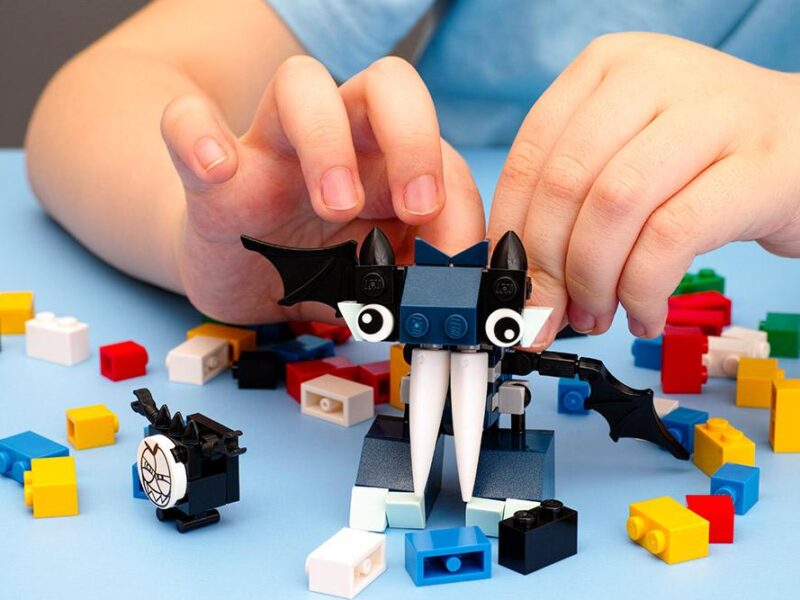
How to get kids playing and learning outside this summer
By Dr. Dina Kulik
Summertime is playtime for kids. We want kids to take a break from the typical disciplined schedule and get away from television and computer screens, so they can enjoy the short window of outdoor time in the sun. Though it may be summer break, there are simple ways for parents to help their children stay sharp and continue learning by turning outdoor playtime into teaching moments. Here are some ways to incorporate learning into summer outdoor games and activities – and ways to stay safe in the summer while you’re at it.
Win in the water
The pool and lake are a seasonal highlight for children and parents alike. While pool games tend to include the classic Marco Polo or belly flop contests, there are clever ways to incorporate simple math in the water without sacrificing any fun.
Number hunt
Gather ping pong balls, tennis balls or anything similar that you’re willing to mark up with waterproof ink.
- Write a number on each ball ranging from one to ten
- Toss the balls into the pool
- Shout out a number at random and have the kids either find the ball with the corresponding number, or collect balls that add up to the number called
This game is great to play with just one child or as a competition, and can be used for learning numbers, easy addition or to work on multiplication. Number Hunt can be played in full-sized pools, kiddie pools or even at the lake under supervision.
Digit dive
For children that are old enough to dive underneath the surface, Digit Dive is a variation of number hunt that involves diving for numbers at the bottom of the pool. For this game, you can find dive toys with numbers on them or use coins. The latter not only helps with addition but incorporates real life skills involved with quickly adding up loose change.
Safety tip: ensure children are supervised in the water, use SPF 30+ on all exposed skin and reapply often. Have aloe or moisturizer available for after-sun cooling.
The great hiking hunt
Family hikes are a perfect way to enjoy the summer weather and experience nature. To make hiking not only fun but also educational, try turning a family hike into a nature scavenger hunt.
Before heading out, equip the kids with a list of items to search for, like birds, plants and bugs, and award points for each item found. Give more points to the harder-to-find items on the list. You can reference local guidebooks for interesting ideas to include in the scavenger hunt and even give kids a disposable camera to capture the items they’ve found. Scavenger hunts are a great way to foster a connection with nature at an early age.
Safety tip: beware of the not so friendly plants, like poison ivy, and bug nests while exploring. Be sure to pack a bag with safety items, like Band-Aids and Polysporin for unexpected scrapes. Have an antihistamine available to help with unexpected allergic reactions, like Benadryl Chewables for oral use and a topical option like Benadryl Itch Spray to help treat rashes and bites/stings.
The growing garden
Most kids love digging in the garden and getting dirty while they explore the plants and creatures in the soil. Offering children the opportunity to grow their own garden is not only a fun way to get kids outside, but teaches them responsibility, math and planning skills.
Allow kids to select the plants they want to grow and how their garden should be designed. Kids can plot out the way their garden is going to look and space-out their crop on graphing paper. This type of planning instills organizational skills and an opportunity to teach the metric system in a real-life scenario.
Head over to your local gardening shop to choose plants and get the right tools – shovel, fork, trowel, etc. Have your child take the lead in asking the store expert questions to help them learn leadership and encourage their natural curiosity.
Help your child dig out the garden and plant the seeds according to their map. To reinforce the responsibility it takes to care for their plants, have them create a watering schedule and post it in a place they can easily view and track. Checkboxes or stickers are a great way for them to track their planting duties. When watering, have the kids use measuring cups to create an understanding of liquids and volume.
Try adding in a fruit or vegetable to the garden, so your kids will have a chance to contribute in new ways to the family meal.
Safety tip: stay covered and hydrated. Make sure everyone gardening is wearing sun hats and drinking plenty of water to beat the heat.





